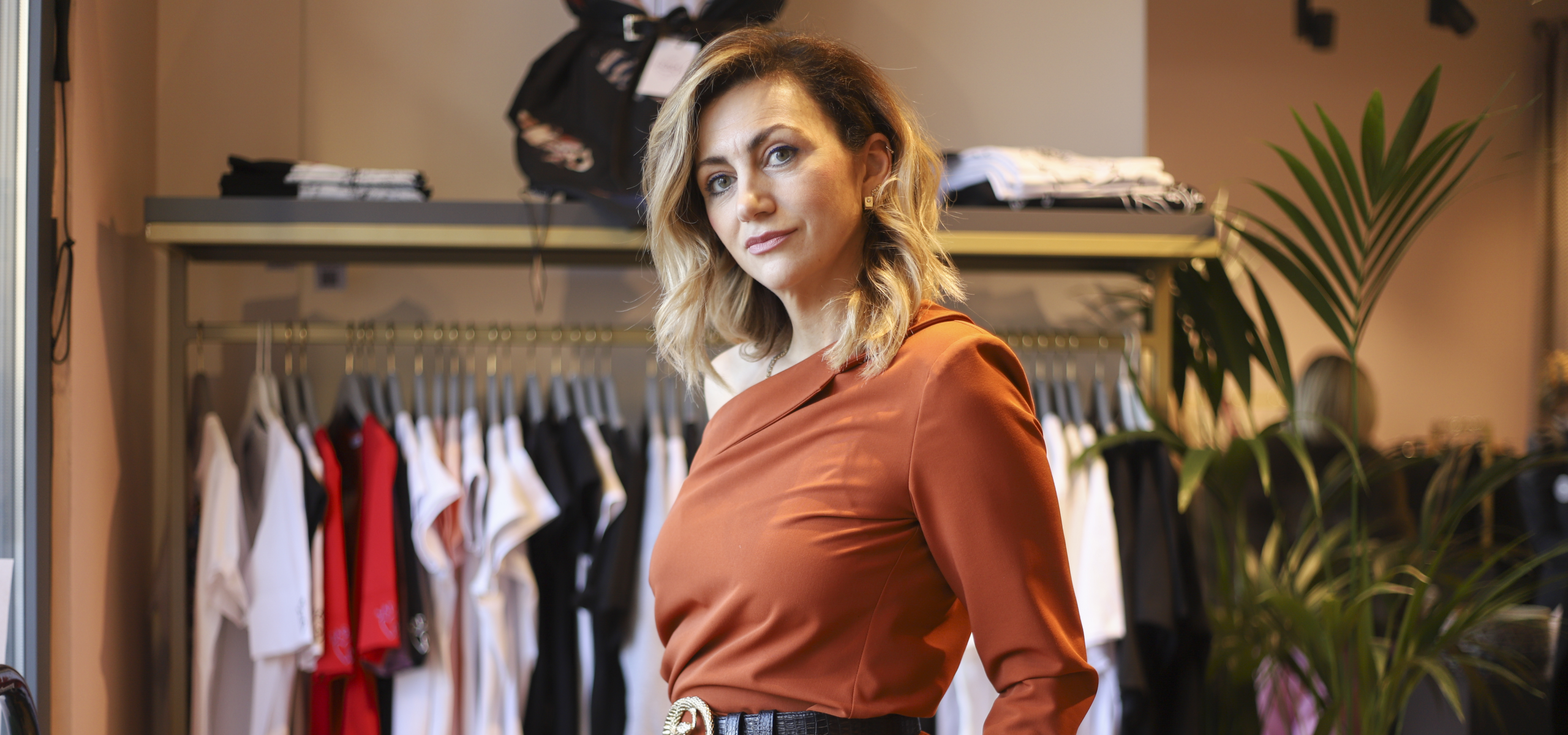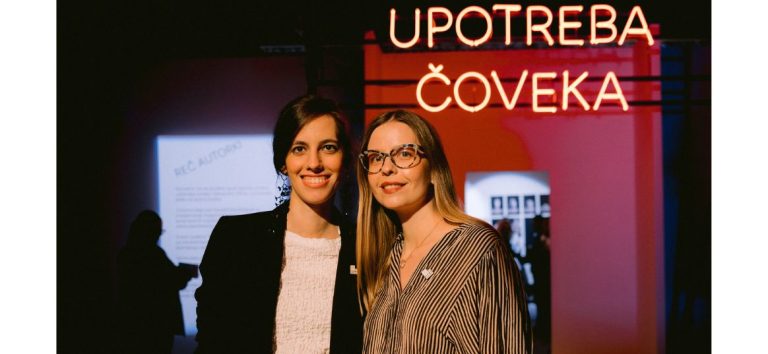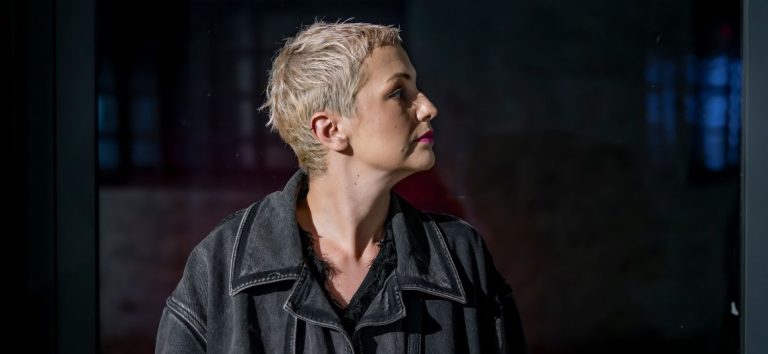The Novi Sad designer Zagorka Zaga Marković will take you to a place where art and fashion fuse, where colours tell stories and design sends clear, socially engaged messages. It all started with a piece of clothing no one could resist, while her fashion brand ZAGA is now known worldwide.
Zaga’s shirts with some of the greatest names of all time, such as Frida Kahlo or Nikola Tesla, were worn by many famous people, but our fellow citizens as well. Cooperating with the Gallery of Matica Srpska, she proved that art can be worn and that boundaries between high art intended for galleries, and art intended for an ordinary observer are slowly fading away. Today, Zaga is urban, elegant and unique, and she is known for these features to fashion lovers outside Novi Sad as well.
Still, her journey to success in the fashion world hasn’t been typical nor easy. Before she started her own fashion brand, Zaga was doing something completely different.
You are a professor of the German language and literature and an industrial management engineer. How did you end up in the world of fashion?
– Love. Besides books, fashion has been my favourite haven ever since I was a little girl. I adored it, I experimented a lot and went through different phases in exploring my personality and aesthetics that felt right. I’ve always wanted to express myself through fashion. It was passion that led me to become a designer. I was in the management world for 10 years before I entered the world of fashion design. I’m still partially doing it today; accepting all sides of my personality and giving myself the freedom to simply be what I am, has helped me a lot. Even though I used to think art was reserved for extremely talented people only, and I didn’t feel like one, life showed me that my affinity for art was too strong to remain hidden. My love for painting actually led me to something similar. A wish to follow my intuition and make something tangible was enhanced by giving birth to my children. I needed to let out the creative rush that I felt back then somehow. I painted and then made my first clothing line of shirts dedicated to great artists. It received positive feedback in a short amount of time and what was my hobby at first, became my second main job.
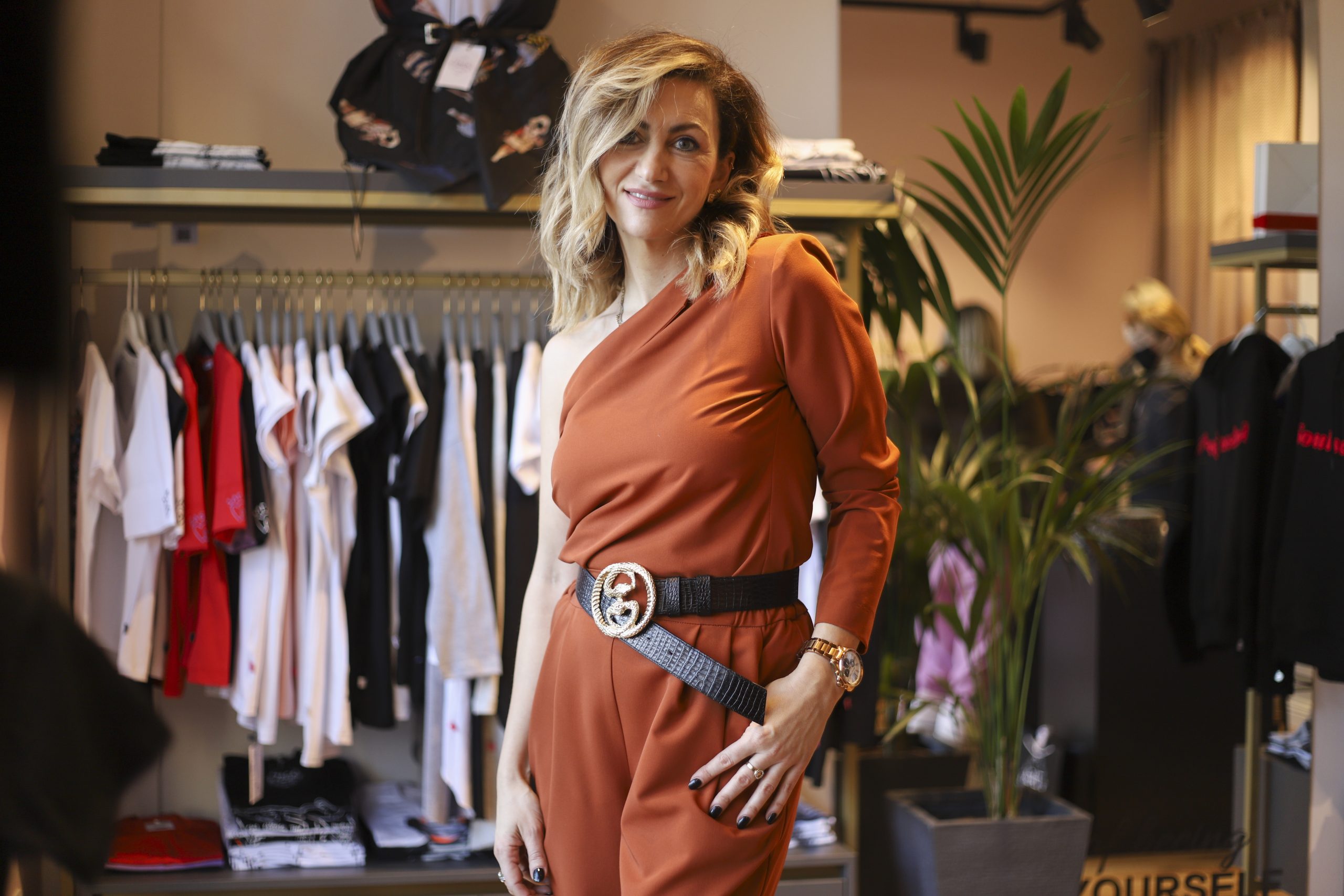
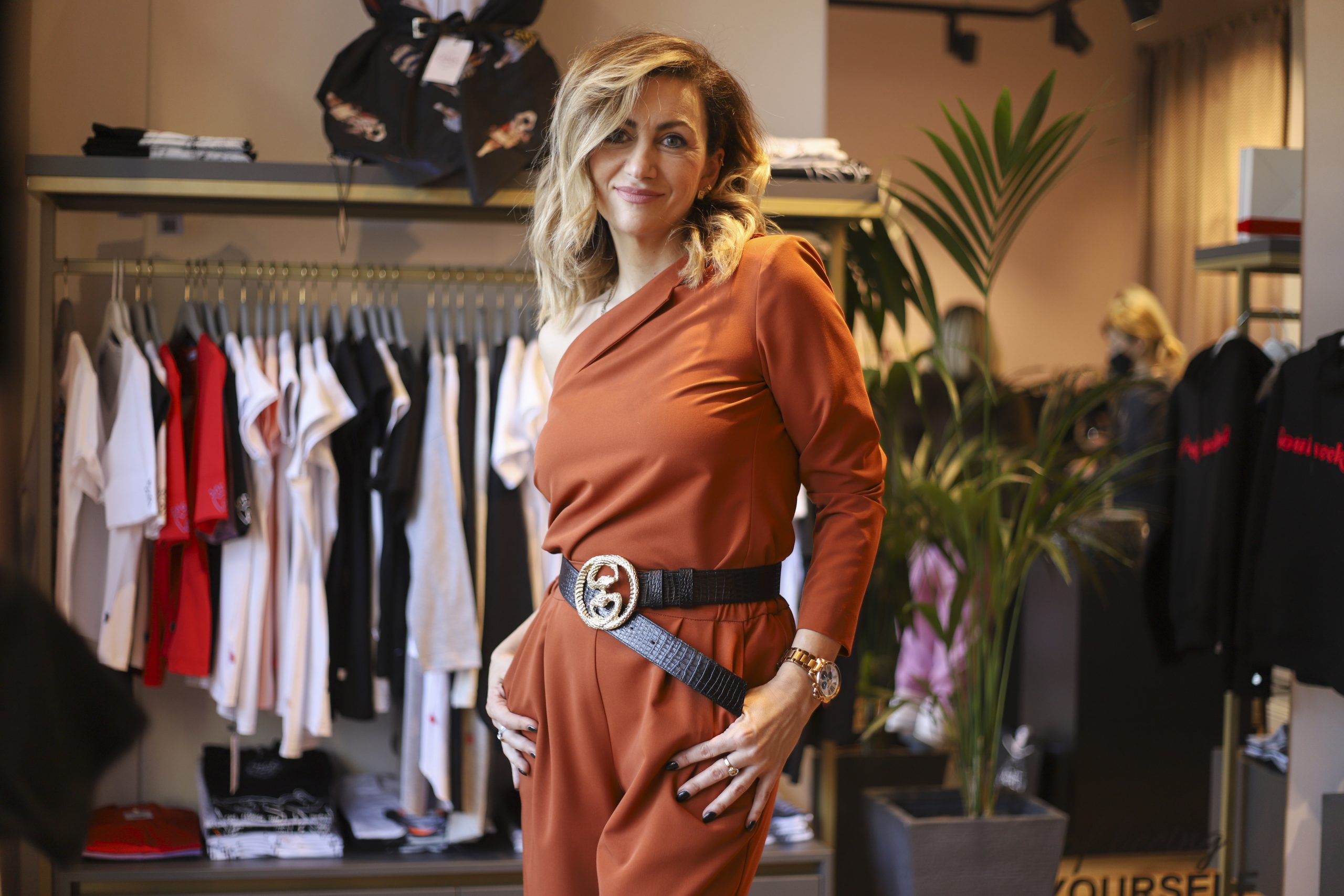
The Gallery of Matica Srpska recognised your work, i.e. your inspiration with authentic people, such as Frida Kahlo and Nikola Tesla, to whom you gave a new dimension on the popular shirts. What were the challenges of working with one of the most important cultural institutions in the country?
– There were no challenges. Except for my nervousness at the beginning, everything that followed was fun and pleasant. The cooperation with the Gallery of Matica Srpska is something I’m very proud of, because the best sign that you are successful, is when your hometown accepts you. Since I first started selling in Belgrade, many citizens of Novi Sad thought ZAGA was a Belgrade brand, which maybe indirectly helped with being accepted on the local market. Cooperation of artists and museums is normal everywhere in the world, and the Gallery of Matica Srpska, as an institution open to new trends, recognised the potential in combining contemporary design and cultural heritage, i.e. establishing modern contact with works of art. They suggested we do a few collections of shirts with our great painters, which we did. As soon as the first collection was sold out, we did a couple more series, among which is the interpretation of Đura Jakšić’s famous painting ‘The Girl in Blue,’ created for the needs of the National Museum in Belgrade. Today, all these shirts are being sold in the museums’ gift shops.
You went to painting classes and did art therapy. To what extent did these activities help you find your expression in the fashion world and connect gallery art with pieces of clothing?
– Timeless hours. Painting classes were my entrance to the world which was pleasant to me and where time didn’t exist. When I think about it, those were maybe the best days ever. They had a strong driving force in my transcendence to the creative world and they helped me free parts of myself which were limited by strict corporative job schedules and obligations. A painter, like any other artist, doesn’t measure time as other people do, he lives in his own world. When I became an entrepreneur, this luxury ceased to exist and I often miss it.
With hyperproduction of clothing in mind, trends changing day by day, social media, especially Instagram, turning to fashion shows, what are the problems you encounter as a fashion designer today? Our attitude towards clothing has also changed, we usually don’t buy clothes to last us a couple of years anymore.
– I often get an impression that there’s a new brand every day. Instagram plays a huge role in that as well, and the game is on 24 hours a day, seven days a week. I’m happy that, in this chaotic world, people still recognise the importance of small brands and designers that work in their own rhythm, and that they’re willing to trust them. People are fed up with this ‘Instagram life’ and the fact that everyone looks the same. They want something authentic and different. If a good idea is followed by good quality of the product, as well as information about where and how it was made, people often value it and can feel it. Not long ago, we started running a blog on our website, with an idea to share with our followers things that are important to us, such as sustainable fashion, ‘FER’ products, slow fashion movements, places we get our inspiration from, etc.
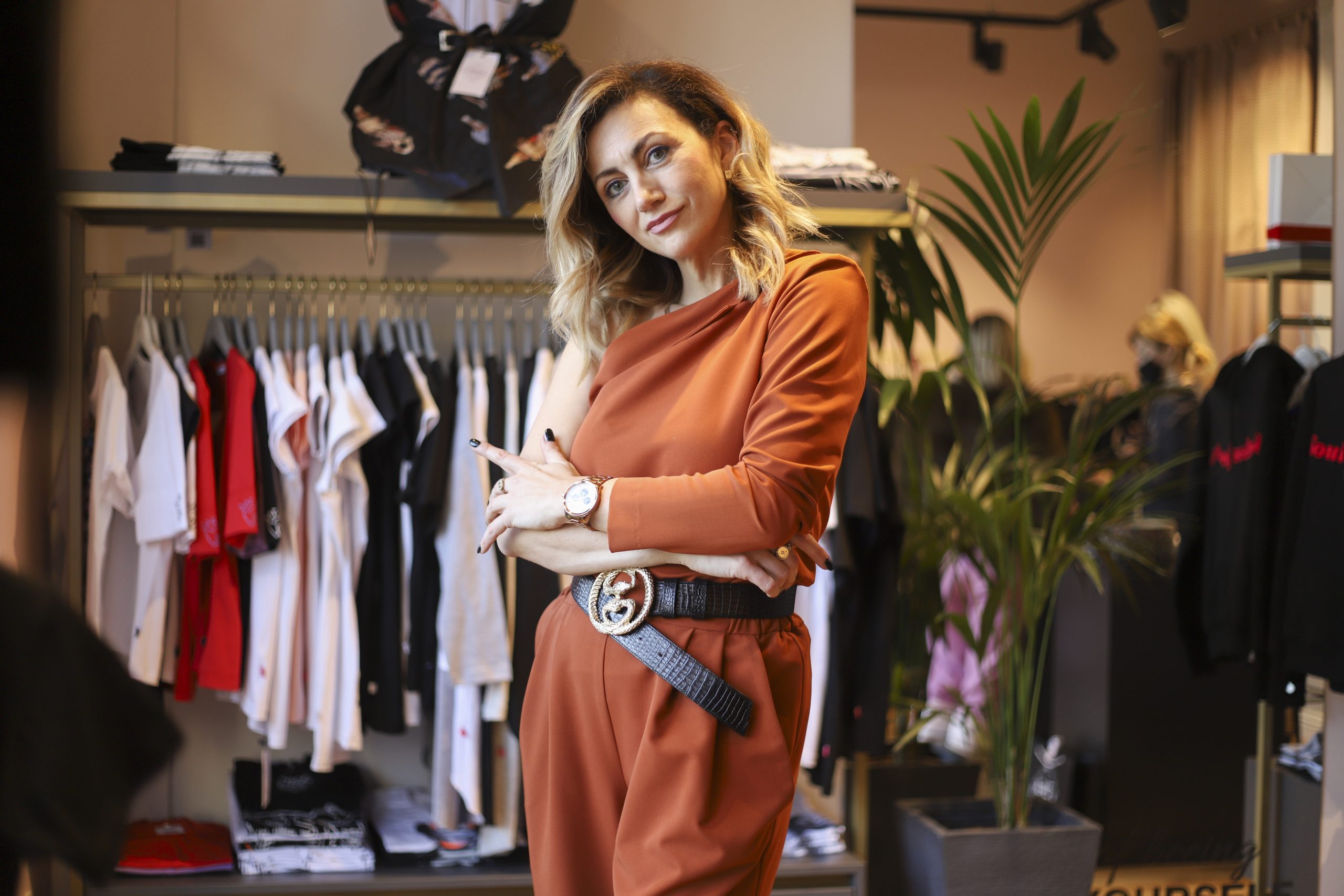
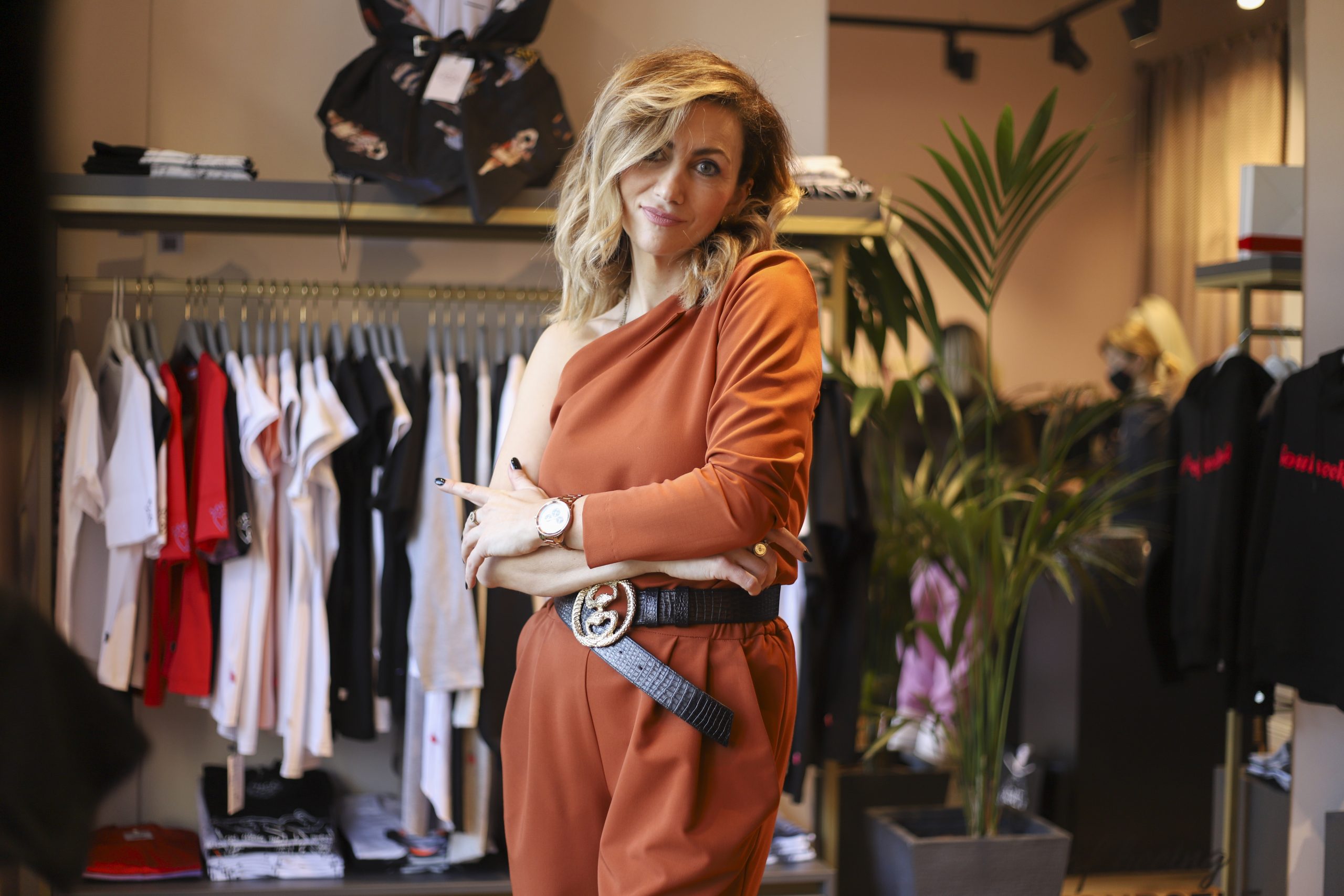
You had your fashion shows within the Serbia Fashion Week manifestation. How important and relevant is this institution for designers in Serbia?
– For me, the cooperation with the SFW was significant because it was the first time I felt the magic of a fashion show; the time when you transfer an idea from your head to reality and when models, with suitable makeup, jewellery and the whole ambience, deliver your creations. Everything mentioned plays a role in transferring your idea to reality. It’s a truly magical moment and I’m thankful to the SFW for that. That moment was a game changer to me since I added elegant pieces of clothing for contemporary women to my sporty street style collection, which are now an integral part of our offer.
Fashion reflects the current state in society and culture. With this in mind, what is your opinion on trends dominant in our country, is there a difference between our trends and world trends which are being marketed and available now more than ever?
– Fashion has become global phenomena and we’re all under the influence of trends we see on social networks and media. I lived in Berlin during my studies, and since then I’ve been a fan of Berlin fashion and their eclectic design. However, in order to dress that way, you need to get inspired and breathe Berlin in; the city is incredibly cool and exciting. Fashion and style are just an outer expression of culture and what we carry within ourselves, the music we listen to, the movies we watch, the interior we enjoy, the food we consume, the way we speak to each other… I wish there was more authenticity in the way people dress in Novi Sad. Still, our country has amazing designers who are highly talented and unique, regardless of the world trends.
Many famous people wear your clothes and it’s one of the signs of popularity. Is it more rewarding to see Novak Đoković wearing your shirt or a person you accidentally pass by in Novi Sad?
– When I’m walking around the city, I often see guys and girls wearing my shirts and it’s a lovely feeling that warms me up. Novak is a special story, the universe awarded me that way, giving me support to keep doing this. It’s a huge reward and proof that anything is possible.
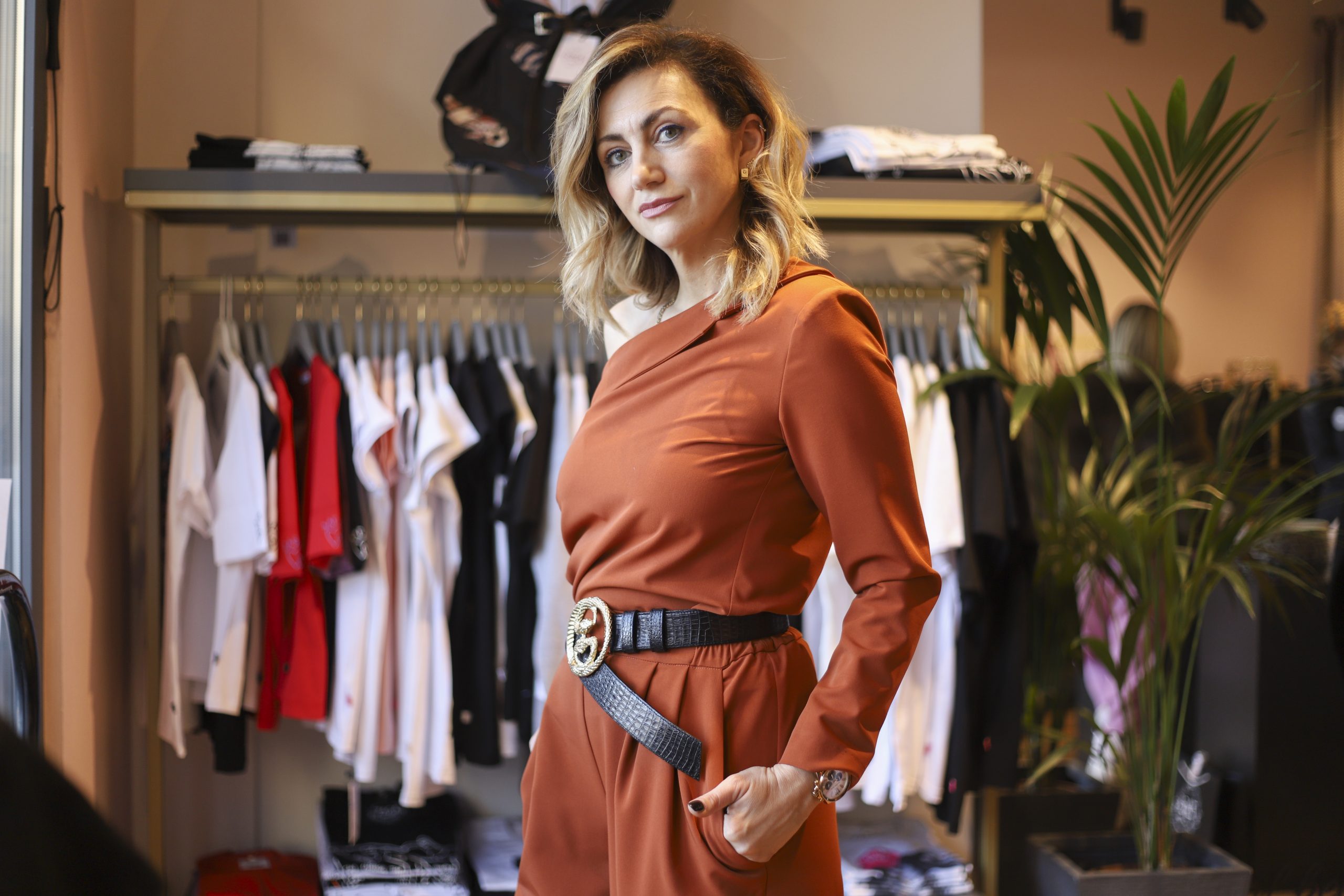
Is there anything authentic about the way people dress in Novi Sad?
– The best style in Novi Sad have teenagers. Sometimes I watch them go out around 9 p.m. and I enjoy seeing their vintage creations, mom jeans combined with oversized hoodies and grandpa’s blazers. These are the young bold spirits that aren’t afraid to be authentic and that’s what’s missing in all generations.
When your friends from abroad or other cities in the country visit you, where do you take them? Where do you like to relax in Novi Sad?
– I like the river and everything that has to do with it. I take my friends to the Danube, then to have some wine at the Fortress, which has the most beautiful view of the city, and then to eat some food at Salaš and listen to tamburaši. In the summer, I like to drink coffee in Porta and hide from the rain under the Tanurdžićeva Palace. These are the things of Novi Sad you immediately fall for.
Which events in our city (cultural, entertainment, sport and other) you never miss?
– I’ve been a fan of the Exit Festival since day one, I love it. I often visit the theatre, concerts in the open and Cinema City. I keep track of the events in the Ice Hall (sr. Ledena dvorana) because we have two hockey players in the family.
Interviewer: Leona Pap
Photo: Uroš Dožić

